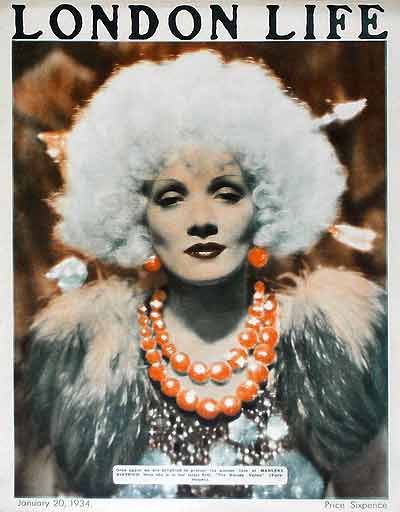7.London Life: Touching Up Photos
by Tony Quinn
Touching up has been done since the start of photography. The above example is a London Life cover in 1934 that was hand coloured from a black and white publicity photograph of Marlene Dietrich in Blonde Venus. Such techniques became widely used to:
- Improve the quality of a print to make it more suitable for publication
- Make someone look better (eg removing veins in eyes; hair on faces)
- Censor images: in 1962, German Roman Catholic newspaper Landeszeitung retouched a picture of Italian actress Claudia Cardinale meeting the Queen by adding a top to her décolleté dress. The paper said people introduced to the Queen should be decently dressed
There were many ways of touching up a print:
- In the dark room
- Painting on or airbrushing negatives
- Pencil, pen and rubber on prints (fast and cheap).
In the 1980s, computer systems such as the Quantel Paintbox and Scitex and Crosfield repro systems made touching up cheaper and faster.
Also, home computers such as the BBC Micro were used to add special effects to TV and It became much easier to cut and paste people and things between images and distort images. Today, all the above is possible on a Mac or PC using software such as Photoshop.
Page 8: Nova: Causing a royal fuss in the swinging sixties




